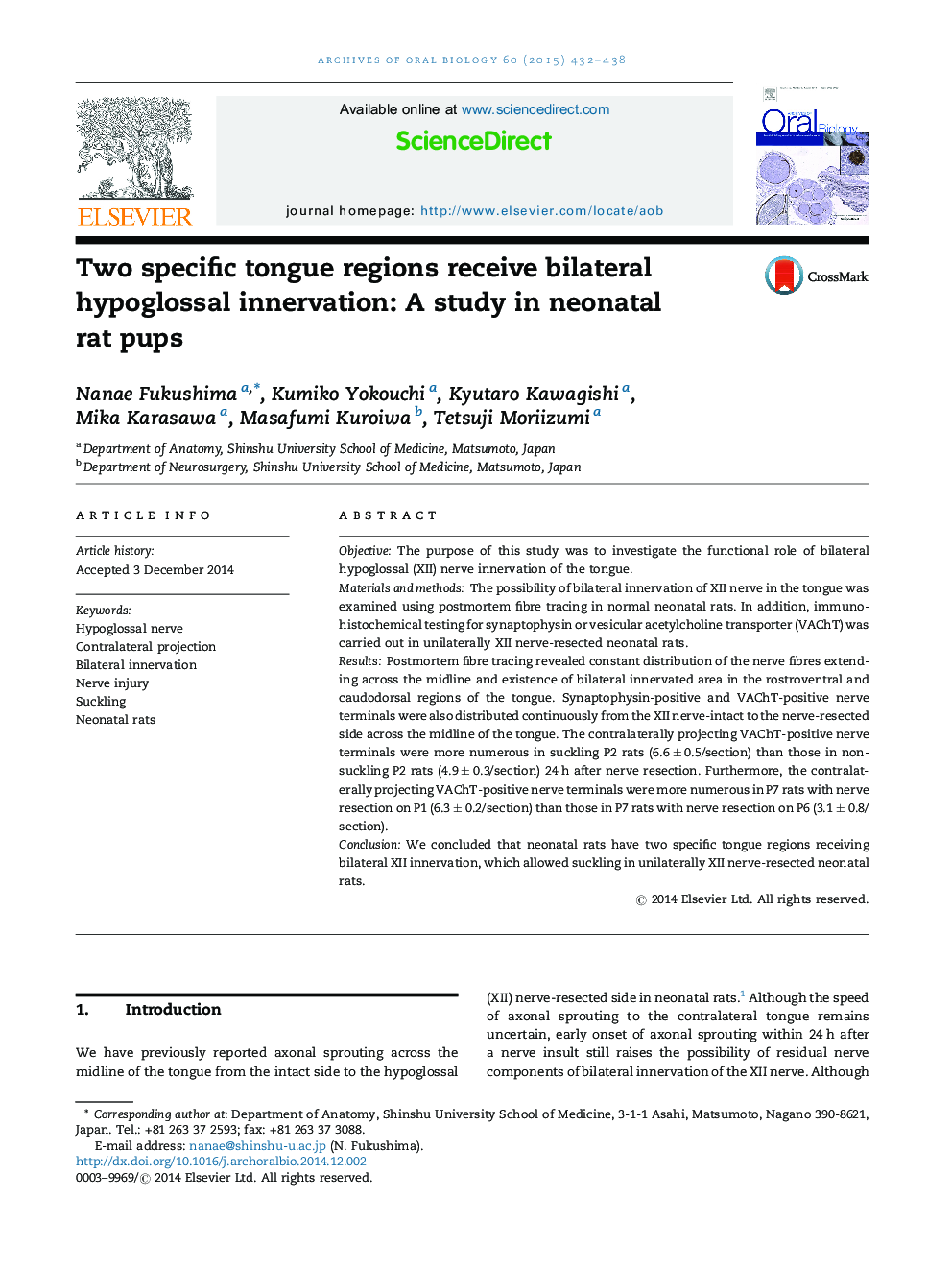| Article ID | Journal | Published Year | Pages | File Type |
|---|---|---|---|---|
| 3120799 | Archives of Oral Biology | 2015 | 7 Pages |
•Two specific tongue regions receive bilateral XII innervation in neonatal rats.•Contralaterally projecting XII nerve components innervate tongue protrudor muscles.•Bilateral XII projections relate to suckling capability in unilateral nerve injury.•Contralateral XII nerve components decrease gradually during development.
ObjectiveThe purpose of this study was to investigate the functional role of bilateral hypoglossal (XII) nerve innervation of the tongue.Materials and methodsThe possibility of bilateral innervation of XII nerve in the tongue was examined using postmortem fibre tracing in normal neonatal rats. In addition, immunohistochemical testing for synaptophysin or vesicular acetylcholine transporter (VAChT) was carried out in unilaterally XII nerve-resected neonatal rats.ResultsPostmortem fibre tracing revealed constant distribution of the nerve fibres extending across the midline and existence of bilateral innervated area in the rostroventral and caudodorsal regions of the tongue. Synaptophysin-positive and VAChT-positive nerve terminals were also distributed continuously from the XII nerve-intact to the nerve-resected side across the midline of the tongue. The contralaterally projecting VAChT-positive nerve terminals were more numerous in suckling P2 rats (6.6 ± 0.5/section) than those in non-suckling P2 rats (4.9 ± 0.3/section) 24 h after nerve resection. Furthermore, the contralaterally projecting VAChT-positive nerve terminals were more numerous in P7 rats with nerve resection on P1 (6.3 ± 0.2/section) than those in P7 rats with nerve resection on P6 (3.1 ± 0.8/section).ConclusionWe concluded that neonatal rats have two specific tongue regions receiving bilateral XII innervation, which allowed suckling in unilaterally XII nerve-resected neonatal rats.
